Space Marine II brings the 41st Millenium to the next-generation
From the very first moment that Space Marine II boots, you can feel the crushing weight of the Warhammer 40k lore bearing down upon you.
We’ve seen the quote “in the grim darkness of the far future, there is only war” so many times now that I can’t even begin to count them, but rarely has it ever felt so impactful – rarely have I experienced a videogame that embodies the Grimdark ethos quite so completely, and rarely as much so as Space Marine II.

Space Marine II is a third person shooter much like the original Space Marine, but where the first game was slow and simplistic, offering the look of Warhammer 40k, but none of the feel, Space Marine II delivers the full package. Brother Titus returns, and we quickly learn that he has been invested in the Deathwatch for over a century — following his accusation of heresy at the end of the first game.
For reasons that I’ll avoid spoiling here, Titus soon finds himself returning to the Ultramarine chapter with the (lesser) rank of Lieutenant, he is tasked with facing down a significant tyranid invasion. Because Space Marine II is a direct sequel to Space Marine (albeit with over a hundred years of separation), there are frequent references to the first game and Titus’ experiences, but none of that is essential to the player enjoying Space Marine II.
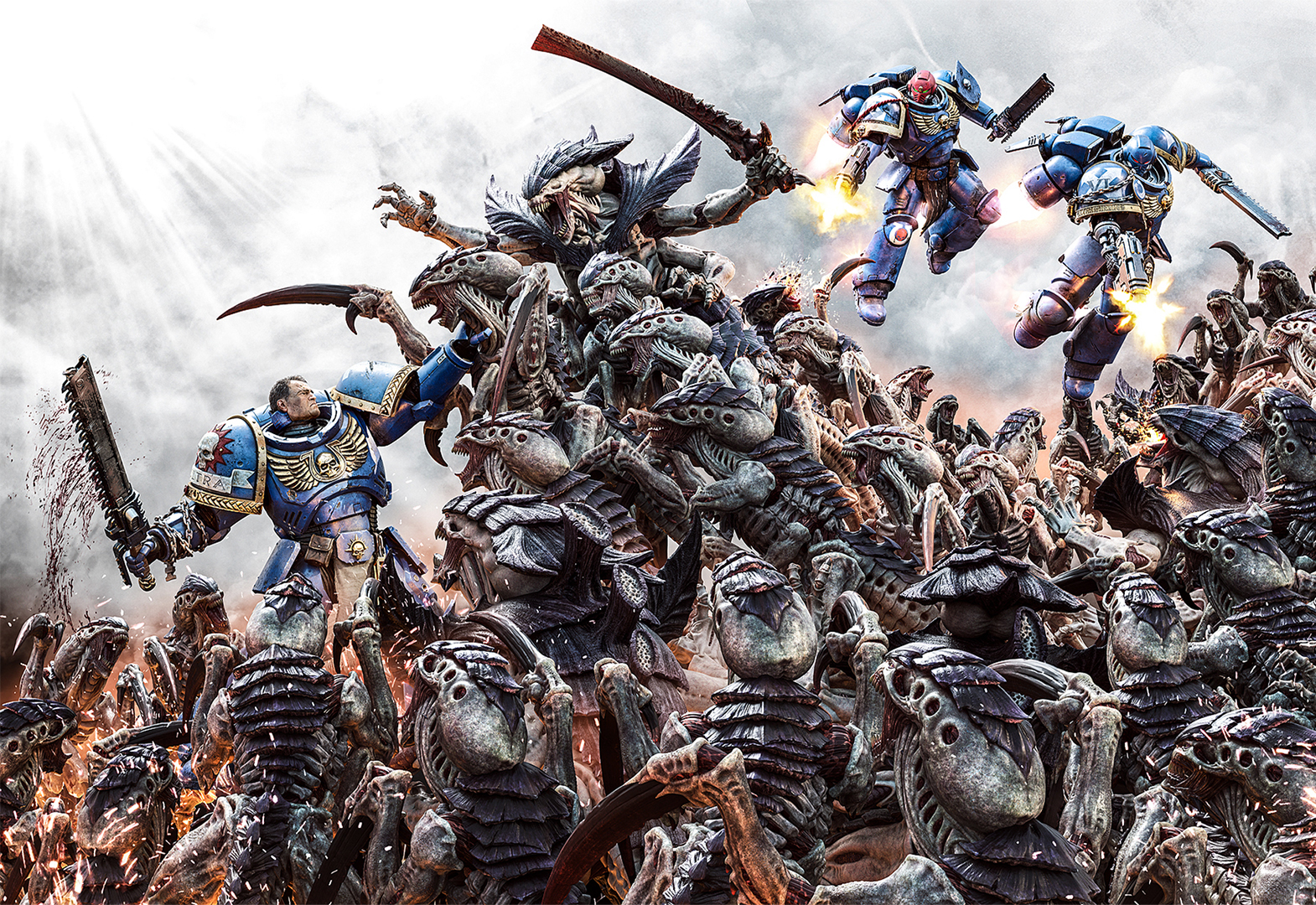
As the ten to twelve hour campaign unfolds, Titus and his men will face down both tyranids and chaos space marines — specifically from the Thousand Sons chapter. Combat styles vary quite dramatically between these two foes, and whilst there are some issues which I’ll come to later, it’s refreshing to experience a game that has two very diverse foes to face over the course of what is a chunky number of missions.
Along with a good number of story sections which are well paced and expertly delivered, combat missions are where you’ll spend most of your time in Space Marine II. In the core campaign, there are about ten main (singleplayer) missions and then eight operations missions that can be played solo (with bots in support) or online cooperatively. There’s also “Eternal War” mode which introduces 6v6 PvP and allows players to engage in, erm, the never-ending struggle for control of the Imperium.
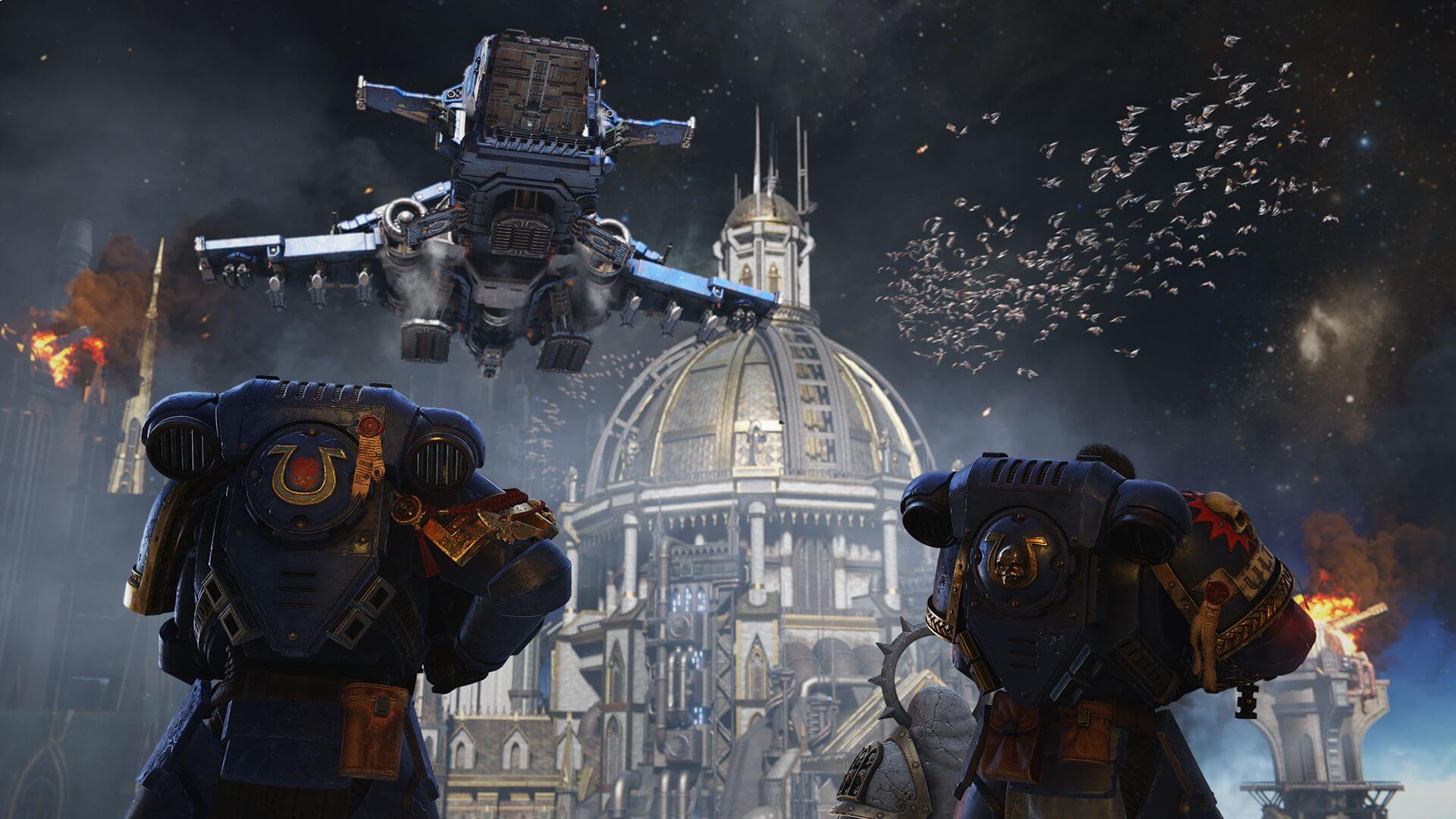
Because this is where you’ll spend most of your time, let’s focus on combat for a moment. Space Marine II is quite unique here, with a parry and dodge system that feels quite “odd” at first, but which grows on you over time, especially if you accept that it has to be a little bit cumbersome due to the fact that space marines are more like a Dark Souls knight in heavy armour than a Bloodborne hunter wearing just a cloak.
In short, Space Marine II allows players to attack naturally using the right trigger to shoot and the right bumper to launch a fast melee attack. Depending on your equipped weapon, a combo of up to four swings can be launched, and if the player holds the right bumper at any point, there’ll be a combo finisher that hits multiple opponents. Most individual skirmishes include a bit of gunfire to soften the enemy and reduce their number, followed by a protracted close quarters fight.
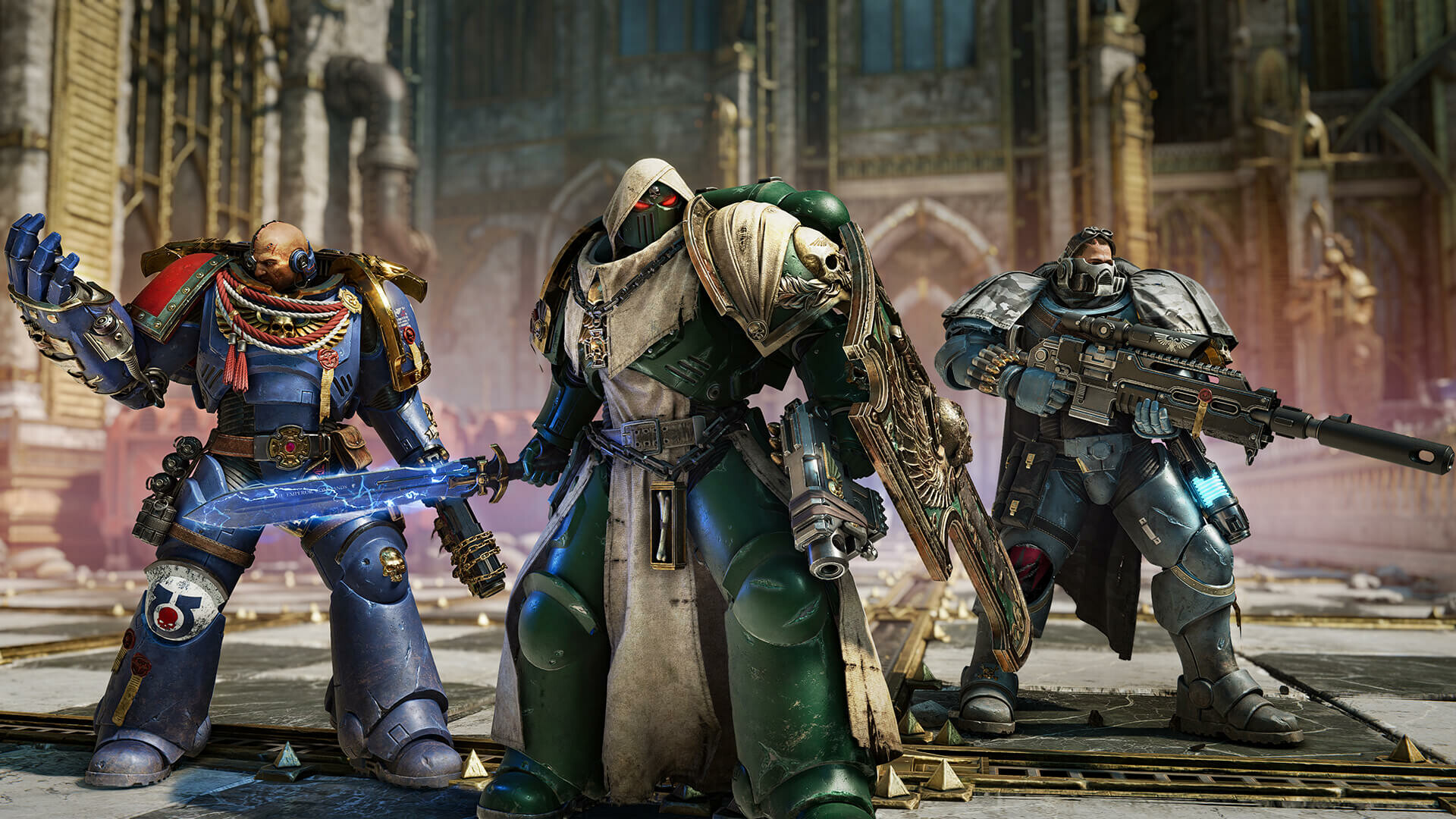
With this in mind, enemies have a couple of cues when attacking. Firstly, a blue attack icon will indicate that an attack can be parried — which is done with the left trigger. For smaller enemies, this will usually result in an instant kill, whilst for larger ones it can open them up to a target gun shot —- which puts a crosshair on the enemy in question and upon the next press of the right trigger, an execution style headshot will be executed immediately.
Often, enemies will show a red attack icon, and this must be dodged (using the A button.) Again if executed successfully, this will usually result in the opportunity to deal a high damage execution shot. My only complaint about both of these parry or dodge systems is that firstly, not all enemy attacks come with a warning, and sometimes, the execution shot doesn’t seem to trigger.
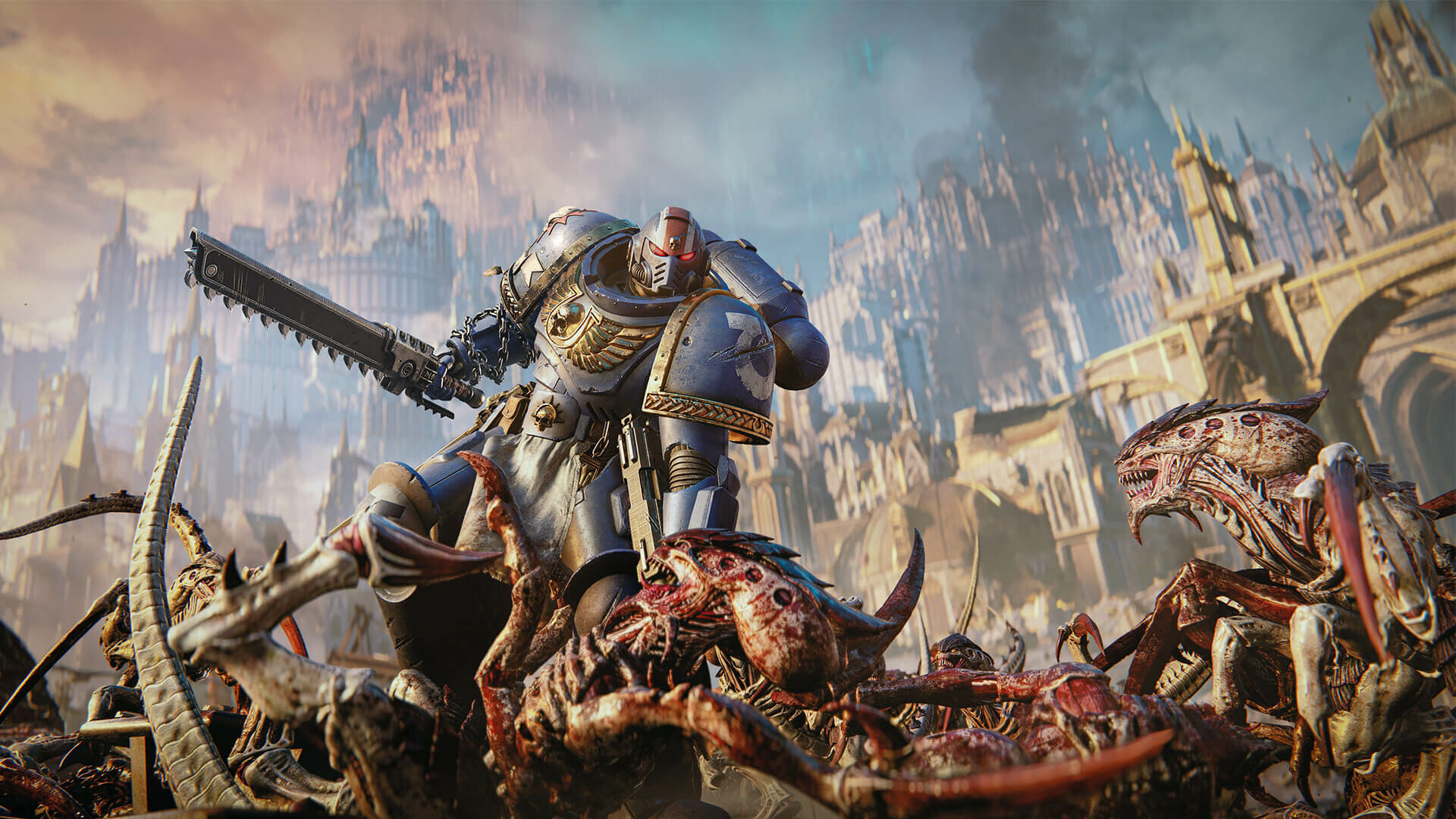
Generally though, whilst Space Marine II requires the kind of heavy controller inputs that leave your thumbs aching at the end of a long session, the combat is meaty, ultra-violent and generally satisfying. Whether this is a gripe or not, I am not sure, but I will just say that the first (roughly) half of the single player game was much harder than the second – and this is simply because tyranids are much harder to fight against that chaos space marines.
Small tyranids (known as hormagaunts) are very easy to kill, but the larger ones use their claw-like arms to shield them from gunfire as they close the distance, and then attack with devastating melee attacks and tail whips. Rarer tyranids which can either fly and use psychic attacks, bury themselves and leap out with little warning, or turn invisible are all very nasty, and the tyranid bosses are super aggressive. Often, these close quarters battles will take place whilst other tyranids attack from range to whittle down your armour. On anything above medium difficulty, these guys are really nasty.
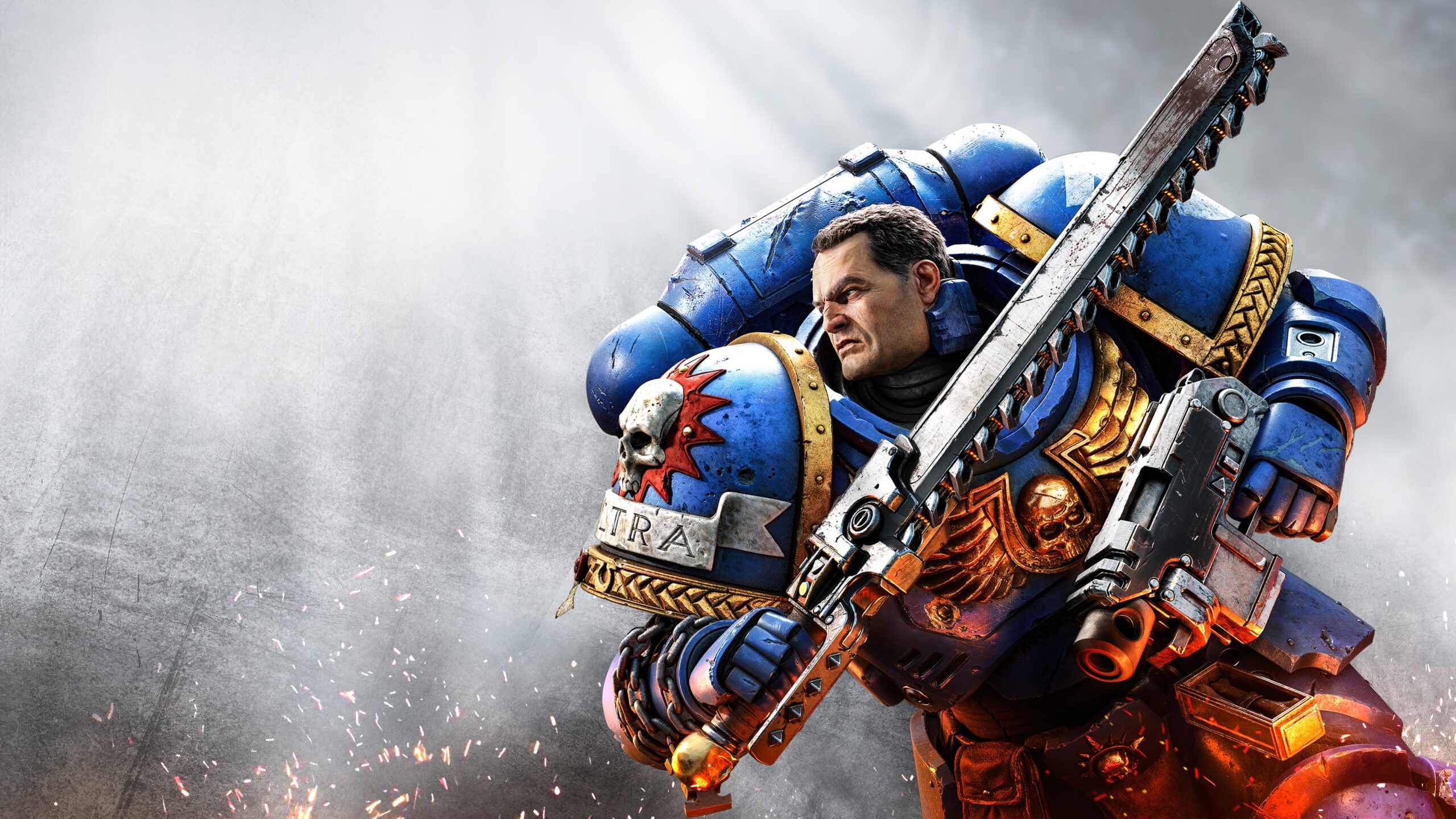
The forces of chaos on the other hand are a bit underwhelming and whilst the chaos grunts are just a little tougher than hormogaunts thanks to their shields, the chaos space marines die rather easily. Most of the thousand son variants can be dispatched with a concentrated clip, or very easily with a significant volley of fire followed by a couple of close quarters blows as you charge towards them.
It’s almost the inversion of the tyranids — where there’s genuine concern that if they get too close to you, you’ll be in trouble. On the contrary here, the thousand sons seem to die far too easily, with little by way of either offensive capability or defensive strength. There are exceptions of course, and the space marine terminators are quite dangerous thanks to their heavy bolters, as are the chaos sorcerers. No spoilers here, but the chaos bosses are definitely much more interesting, and these lead to some quite unique moments and set pieces which I really did enjoy.
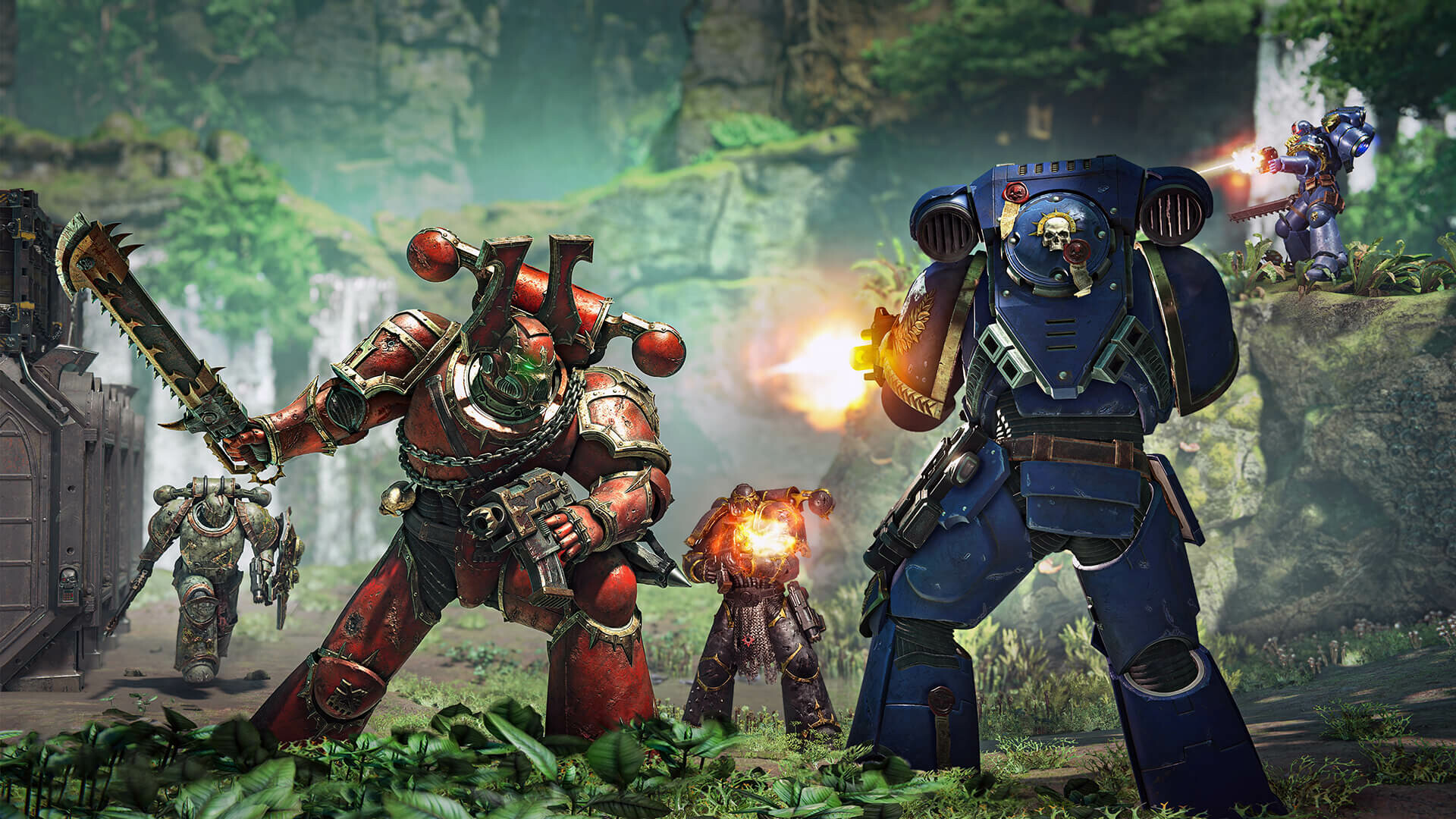
On that note, I really liked the Space Marine II campaign because it blends action, story and set pieces together really well, and it uses the Warhammer 40k licence as well as I’ve seen in any game to date. The story of Titus and his squad is compelling, as is the ongoing and Imperium defining story that began in Space Marine and continues here. There’s allsorts of space-nonsense going on, and I am absolutely here for it.
In terms of multiplayer, we’ve had slightly limited access to the matchmaking facilities during our review process, however we have enjoyed the cooperative Operations missions – which often play out as parallel missions to those in the main story, with Titus commanding the player squad from afar, and Operations that you complete thematically having an impact on the story of Titus and his team. In gameplay terms, this means nothing, but I enjoyed the linkage between single player campaign and the Operations mode, and again it just demonstrates the use of this amazing lore.
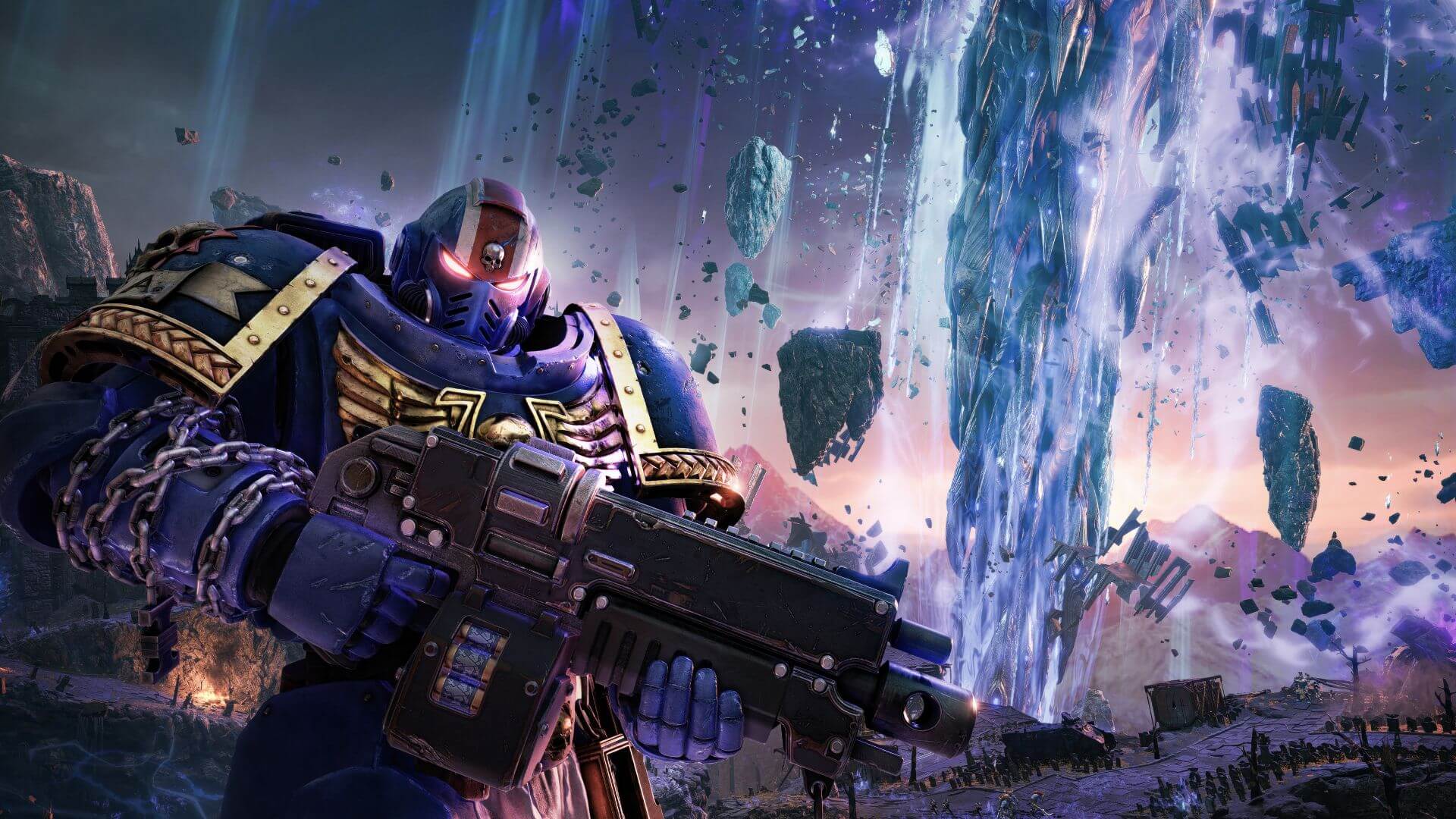
Space Marine II looks, sounds and feels more like any Warhammer 40k than any other game I’ve played in as long as I can remember. It has the weight and heft that a game set in this world requires, and it also has the spit and polish that any game using this IP deserves. Every character looks as good as the Games Workshop models that inspired them, and whilst the combat is a bit sluggish and slightly unbalanced, it is still very enjoyable. The main campaign is lengthy and fun, and the multiplayer modes are generous and well thought out. Overall, Space Marine II is a solid and welcome return to the Warhammer 40k universe.
You can find Space Marine II on PC.
Comments are closed.